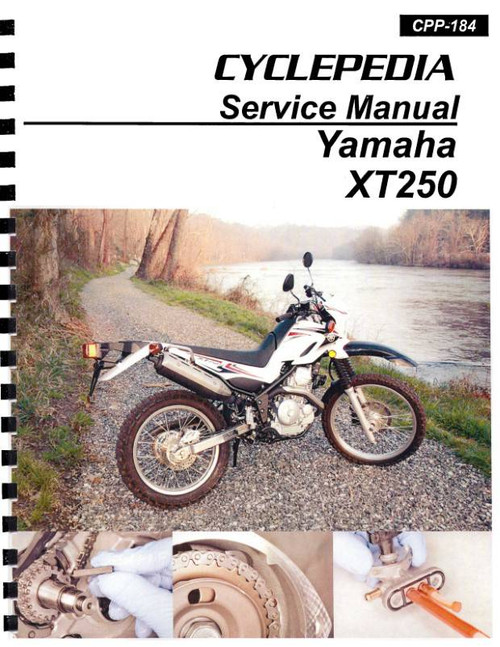The Yamaha Rhino 700 DIY repair manual by Clymer, covers 4-wheelers powered by 686cc single-cylinder, 4-stroke, liquid-cooled, SOHC engines, including:
- Yamaha Rhino 700, 2008-2009
- Yamaha Rhino 700, 2011-2012
For Yamaha Rhino repair, there is no better source than the Yamaha Rhino 700 Repair Manual 2008-2012 available at The Motor Bookstore. These side-by-side off-road four-wheel drive vehicles can be great fun for their owners, but there's nothing fun about incurring exorbitant repair costs at a mechanic's shop because you don't know how to do the maintenance yourself. Now you can with these Clymer manuals that show DIY owners of Yamaha Rhinos how to take care of the top end and lower end of the engine, the fuel injection system, the electrical system, the front axles and differential and every other aspect of these off-road wonders. The 2012 Yamaha Rhino service manual comes with 422 information-packed pages that are filled with copious photos and illustrations to help you handle repairs and maintenance on your own.
Book Excerpt
CLUTCH AND SHEAVESPRIMARY SHEAVE The primary sheave is mounted on the clutch housing shaft and consists of two major pieces. The fixed sheave (A, Figure34) is a single plate that remains in one position on the shaft, while the sliding sheave, depending on shaft speed. As shaft speed increases, centrifugal weighs inside the sliding sheave push it toward the fixed sheave. This forces the drive belt higher in the sheave assembly. As shaft speed decreases, the weights apply less force and the belt moves lower in the sheave assembly. This raising and lowering of the belt works in conjunction with the secondary sheave to provide variable gear ratios. Refer to Figure 35. DISASSEMBLY
- Remove the collar (1, Figure 35) if it remained in the sliding sheave assembly.
- Remove the screws and washers (A, Figure 36) from the cap (B). Then pry the cap off the sheave (Figure 37). Resistance from the O-ring (5, Figure 35) at the perimeter of the sheave will be felt during removal.
- Remove the O-ring (A, Figure 38) and the pulley cam (B).
- Remove the sliders (Figure 39) attached to the pulley cam.
- Remove the weights (A, Figure 40) from the sheave.
- Remove the seals (A, Figure 41) from the sheave bore.
INSPECTION
- Clean and dry all parts. Remove grease from all parts.
- Inspect the sliding sheave as follows:
- Inspect the sheave bore (B, Figure 41) for scoring or other damage. If damage is noted, inspect the collar for the same conditions.
- Inspect the pulley cam (C, Figure 41) and slider (D) contact areas for scoring and other damage.
- Inspect the pulley cam as follows:
- Inspect the weight ramps (A, Figure 42) for uneven wear and scoring. If the ramps appear unequally worn, the weights are not uniformly engaging or applying even pressure.
- Inspect the slider grooves (B, Figure 42) for cracks and other damage.
- Replace the sliders (Figure 39) if the inner face is worn or damaged. The sliders must be in good condition so the sliding sheave does not drag or jam against the pulley.
Subject: 2008, 2009, 2010, 2011, 2012 Yamaha Rhino 700 service, maintenance, repair. ISBN-10: 1599695413 | ISBN-13: 9781599695419 | Clymer M291
- General Information
- Troubleshooting
- Lubrication, Maintenance and Tune-up
- Engine Top End and Exhaust System
- Engine Lower End
- Clutch and Sheaves
- Transmission and Shift Mechanism
- Fuel Injection System
- Electrical System
- Liquid Cooling and Oil Cooler Systems
- Front Suspension and Steering
- Front Axles and Differential
- Rear Suspension
- Rear Axles and Final Drive
- Brakes
- Body
- Color Wiring Diagrams










